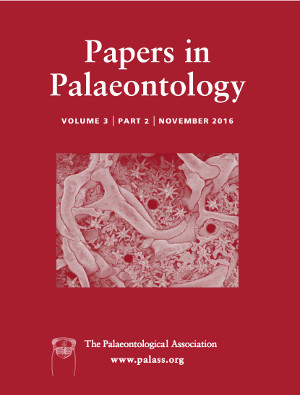Reg. Charity No. 1168330

Serial grinding and three‐dimensional reconstruction of aff. Parahaentzschelinia trace fossils from the Ordovician Winterhouse Formation reveals complex tiered network systems associated with more typical Parahaentzschelinia‐like conical bundles of sub‐vertical tubes. The morphological complexity of the burrow system is interpreted as an indication of the diverse behaviour of the trace‐making organism. This organism is inferred to have exploited organic matter within the sand‐rich event beds as well as in muddier beds above and below the sandstone beds using a variety of behaviours. Potential burrow irrigation and microbial cultivation associated with gardening behaviour is also inferred. The trace‐making organism is unknown, but comparisons are drawn between the structures observed herein and those produced by both modern polychaetes and bivalves.